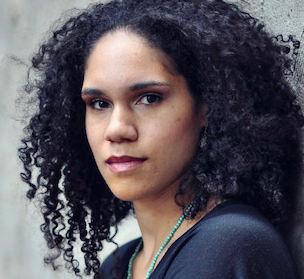|
Symphony
MONUMENTAL MAHLER 5TH IN SO CO PHIL'S SEASON ENDING CONCERT
by Terry McNeill
Sunday, April 14, 2024
Chamber
OAKMONT SEASON CLOSES WITH STRAUSS' PASSIONATE SONATA
by Terry McNeill
Thursday, April 11, 2024
Chamber
MORE GOLD THAN KORN AT ALEXANDER SQ CONCERT
by Terry McNeill
Sunday, April 7, 2024
Choral and Vocal
VIBRANT GOOD FRIDAY REQUIEM AT CHURCH OF THE ROSES
by Pamela Hicks Gailey
Friday, March 29, 2024
TWO OLD, TWO NEW AT THE SR SYMPHONY'S MARCH CONCERT IN WEILL
by Peter Lert
Saturday, March 23, 2024
Chamber
NOT A SEVENTH BUT A FIRST AT SPRING LAKE VILLAGE CONCERT
by Terry McNeill
Wednesday, March 20, 2024
THIRTY-THREE PLUS VARIATIONS AND AN OCEAN VIEW
by Terry McNeill
Saturday, March 16, 2024
Choral and Vocal
A ST. JOHN PASSION FOR THE AGES
by Abby Wasserman
Friday, March 8, 2024
Choral and Vocal
SPLENDID SCHUBERT SONGS IN SANET ALLEN RECITAL
by Terry McNeill
Saturday, March 2, 2024
Chamber
SHAW'S MICROFICTIONS HIGHLIGHTS MIRO QUARTET'S SEBASTOPOL CONCERT
by Peter Lert
Friday, March 1, 2024
|
 |
 Composer Jesse Montgomery |
HEROIC EFFORT FROM THE SANTA ROSA SYMPHONY
by Steve Osborn
Sunday, December 13, 2020
December 13 was a rainy day, perfect for huddling indoors and watching a prerecorded “live” performance by the Santa Rosa Symphony. The program was expansive, with music from the 18th through 21st centuries, and the mood was festive, in keeping with the holiday season. There was something in the feast for everyone.
Fans of contemporary music got their share in the opening appetizer: “Source Code,” a piece for string orchestra (originally string quartet) by the contemporary Black composer and violinist Jessie Montgomery. The title refers to gospel music, which Montgomery’s program notes call “a significant part of the DNA of black folk music, and subsequently most American pop music forms that have developed to the present day.”
One strand of that DNA was evident from the opening blue notes that emerged from a single sustained tone. At first, the blue notes sounded vaguely Chinese, and a subsequent violin solo sounded almost like French impressionism; but the connection with spirituals was unmistakable once the orchestra got going. Different sections took turns playing the haunting melodies as the piece slowly grew in intensity, culminating in a long note at the end. It was a riveting performance.
Lighter fare ensued, in the form of a Vivaldi concerto for violin, two oboes and two horns, one of five that Vivaldi wrote for the same instrumentation. The wind soloists stood behind plexiglass at the back of the stage while Principal Second Violinist Karen Shinozaki Sor stood near her usual position in front of conductor Francesco Lecce-Chong. The concerto was mostly standard Vivaldi, but there were a few surprises. The violin-oboe duet in the middle movement was outstanding, and the cello solo in the final movement was completely unexpected.
Sor and her colleagues – Laura Reynolds and Jesse Barrett on oboes; Meredith Brown and Alex Camphouse on horns — played exceptionally well, but most of the focus was on Ms. Sor, who articulated Vivaldi’s rapid-fire solos with near-perfect intonation and a ramrod-straight bow. She seemed quite relaxed, and the results were buoyant.
The feast continued with Ralph Vaughan Williams’“Fantasia on Greensleeves,” a holiday staple nearing its century mark. An amusing video featuring a howling dog and two of the Symphony’s violinists preceded the performance. The connection with Greensleeves was unclear, but there was no howling to be heard during the old English song’s tranquil four minutes.
The main course arrived in the second half with an impassioned rendition of Beethoven’s “Eroica” symphony, his third. Mr. Lecce-Chong, conducting without a score, set a brisk tempo at the outset of the Allegro con brio opening movement and maintained it throughout. The playing was exemplary, with sparkling sforzandos, precise articulations and a propulsive rhythm. Everyone was in sync, and the orchestra’s sonic ascent near the end of the first movement was nothing short of thrilling.
The Marche funebre of the second movement unfurled in stark contrast to the Allegro of the first. The slow and deliberate pace conjured a sense of tragedy, heightened by the many plangent oboe solos from Ms. Reynolds. The strings accompanying her sounded almost as one, with near-perfect unison. The middle section offered a brief ray of sunshine before plunging back into the funereal depths.
After the burial, the orchestra launched into the third movement’s brilliant Scherzo. They played with urgency and insistence while keeping their dynamics fully under control. It was share and share alike as the motifs hopped from section to section, with a long and hushed expectancy leading to a strong ending.
The conductor opened the final Allegro molto movement at an even more blistering pace, with the brass shining forth. Much of the music in the movement derives from the four-note opening motif, which starts at the tonic, goes up a fifth to the dominant, down an octave to the lower dominant and back up to the tonic. Beethoven makes the motif hard to forget, continually returning to variations thereof and then to a magnificent fugue where the theme hopscotches around the orchestra. Mr. Lecce-Chong’s interpretation foregrounded the structure, with every note separated and clearly defined. The climax arrived when the entire first-violin section stood up to deliver a strident solo. It was an epic performance, with real drama and great musicality, capped off by a quicksilver sprint to the finish.
This was the Symphony’s third video concert, and the camerawork has steadily improved. The lighting was better than before, and the camera angles and movements more imaginative. Zooms were used to good effect, and occasional pans across the stage brought the orchestra together. The only glitch was that the cameras sometimes focused on musicians who weren’t playing and often missed important entries. That is sure to improve as the Symphony gets more used to its temporarily virtual existence.
|

